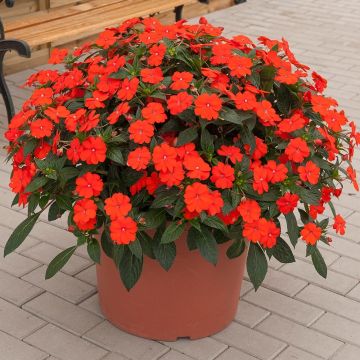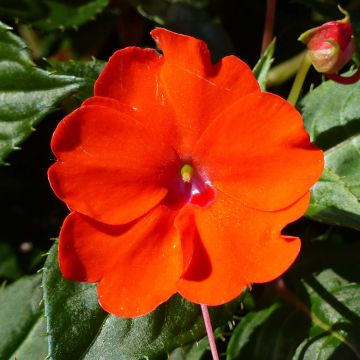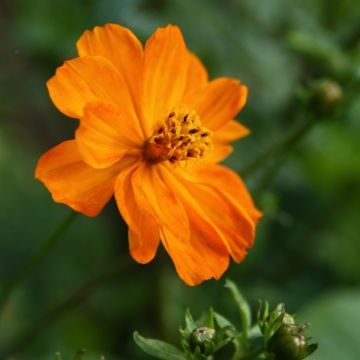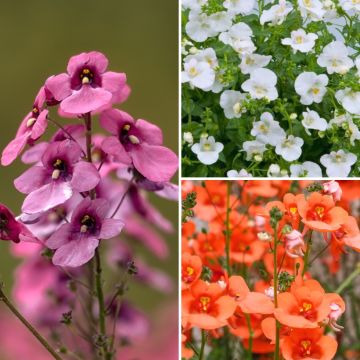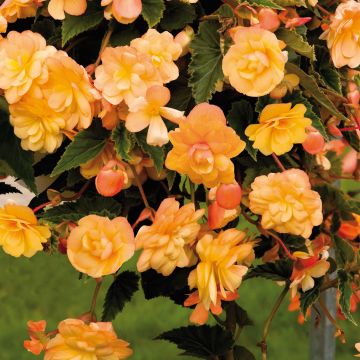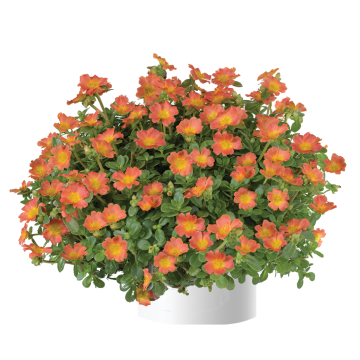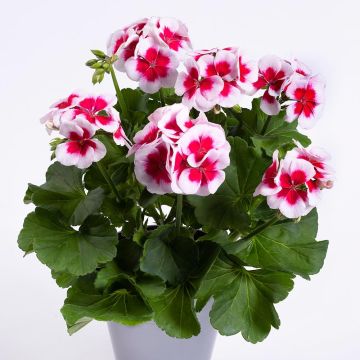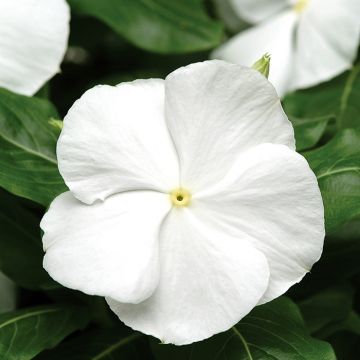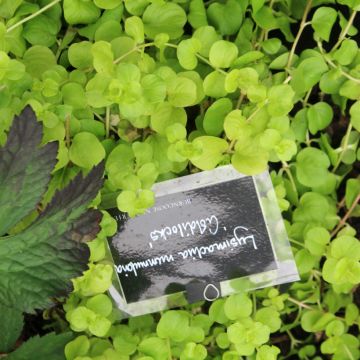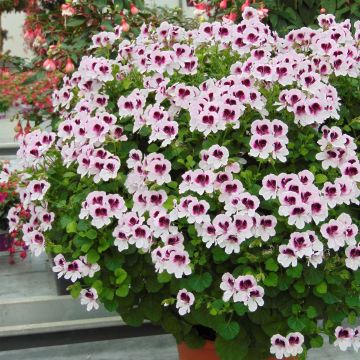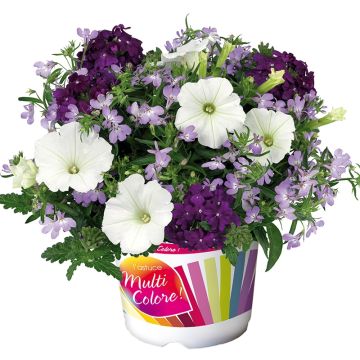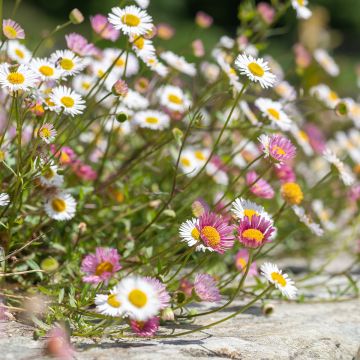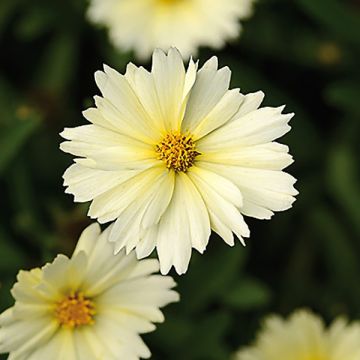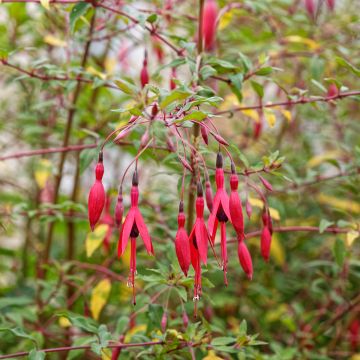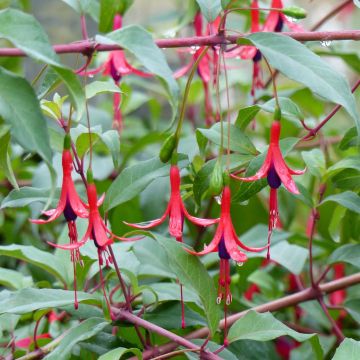

Glaucium corniculatum


Glaucium corniculatum
Glaucium corniculatum
Glaucium corniculatum
Red horned poppy
Why not try an alternative variety in stock?
View all →This plant carries a 6 months recovery warranty
More information
We guarantee the quality of our plants for a full growing cycle, and will replace at our expense any plant that fails to recover under normal climatic and planting conditions.
From €5.90 for pickup delivery and €6.90 for home delivery
Express home delivery from €8.90.
Does this plant fit my garden?
Set up your Plantfit profile →
Description
The Glaucium corniculatum, also known as the red horned poppy, is a beautiful wild plant that is sometimes found emerging from poor, sun-baked soil. Hairy all over, it forms a clump of beautifully cut, glaucous leaves that come to life in spring with large red-orange poppy flowers. This poppy only lives long enough to produce seeds, ensuring its continuity by self-seeding wherever suits it.
The Glaucium corniculatum belongs to the Papaveraceae family. This botanical species is found in southern Europe, Asia Minor, North Africa, and Central Asia. Its natural environment corresponds to arid wasteland, sandy hillsides, rocky areas, roadside edges, scrublands, and coastal areas. This poppy first develops a hairy, oblong, wavy, pennatilobed rosette of beautiful greyish-blue-green leaves. The whole measures 15 to 40 cm (15.7 in) in height. Flowering occurs from March to June depending on the climate. The flowers are solitary, 3 to 5 cm (2 in) wide, composed of satin-textured petals, ranging from orange-red to orange-yellow, adorned with a dark brownish-black spot at the base. The floral buds are very hairy, carried by an erect and branching hairy stem, with divided leaves covered with a bluish bloom, with incised edges. The fruit is a long, erect silique measuring 11 to 20 cm (7.9 in), resembling a horn, which releases its seeds as it dries out. In warmer areas, the plant germinates in autumn, holding onto its leaves over winter.
Glauciums were, until 50 years ago, very common on our sandy coasts, but these annual or biennial plants are now tending to decline sharply. All the more reason to introduce them to our gardens, where they can roam to their heart's content. The red horned poppy thrives in rockeries and on arid slopes, in the company of other wild plants such as horned lotus, vetches, or California poppies. However, this plant does not like competition and is often found isolated in inhospitable places!
Report an error about the product description
Glaucium corniculatum in pictures
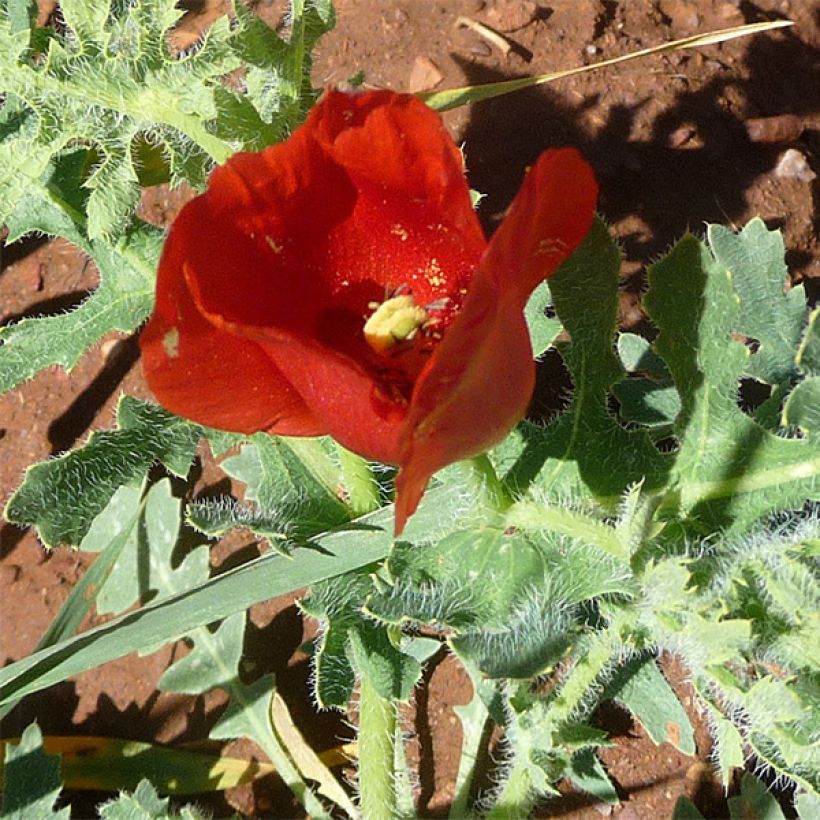





Flowering
Foliage
Plant habit
Botanical data
Glaucium
corniculatum
Papaveraceae
Red horned poppy
Southern Europe
Other Annuals A to Z
Planting and care
Growing Glaucium is easy in a scree garden, a large rockery, a sunny slope, in any sandy, rocky, rich or poor soil, whether chalky or not, but always very well-drained where they self-seed abundantly.
Planting period
Intended location
Care
This item has not been reviewed yet - be the first to leave a review about it.
Plug plants - Annuals
Haven't found what you were looking for?
Hardiness is the lowest winter temperature a plant can endure without suffering serious damage or even dying. However, hardiness is affected by location (a sheltered area, such as a patio), protection (winter cover) and soil type (hardiness is improved by well-drained soil).

Photo Sharing Terms & Conditions
In order to encourage gardeners to interact and share their experiences, Promesse de fleurs offers various media enabling content to be uploaded onto its Site - in particular via the ‘Photo sharing’ module.
The User agrees to refrain from:
- Posting any content that is illegal, prejudicial, insulting, racist, inciteful to hatred, revisionist, contrary to public decency, that infringes on privacy or on the privacy rights of third parties, in particular the publicity rights of persons and goods, intellectual property rights, or the right to privacy.
- Submitting content on behalf of a third party;
- Impersonate the identity of a third party and/or publish any personal information about a third party;
In general, the User undertakes to refrain from any unethical behaviour.
All Content (in particular text, comments, files, images, photos, videos, creative works, etc.), which may be subject to property or intellectual property rights, image or other private rights, shall remain the property of the User, subject to the limited rights granted by the terms of the licence granted by Promesse de fleurs as stated below. Users are at liberty to publish or not to publish such Content on the Site, notably via the ‘Photo Sharing’ facility, and accept that this Content shall be made public and freely accessible, notably on the Internet.
Users further acknowledge, undertake to have ,and guarantee that they hold all necessary rights and permissions to publish such material on the Site, in particular with regard to the legislation in force pertaining to any privacy, property, intellectual property, image, or contractual rights, or rights of any other nature. By publishing such Content on the Site, Users acknowledge accepting full liability as publishers of the Content within the meaning of the law, and grant Promesse de fleurs, free of charge, an inclusive, worldwide licence for the said Content for the entire duration of its publication, including all reproduction, representation, up/downloading, displaying, performing, transmission, and storage rights.
Users also grant permission for their name to be linked to the Content and accept that this link may not always be made available.
By engaging in posting material, Users consent to their Content becoming automatically accessible on the Internet, in particular on other sites and/or blogs and/or web pages of the Promesse de fleurs site, including in particular social pages and the Promesse de fleurs catalogue.
Users may secure the removal of entrusted content free of charge by issuing a simple request via our contact form.
The flowering period indicated on our website applies to countries and regions located in USDA zone 8 (France, the United Kingdom, Ireland, the Netherlands, etc.)
It will vary according to where you live:
- In zones 9 to 10 (Italy, Spain, Greece, etc.), flowering will occur about 2 to 4 weeks earlier.
- In zones 6 to 7 (Germany, Poland, Slovenia, and lower mountainous regions), flowering will be delayed by 2 to 3 weeks.
- In zone 5 (Central Europe, Scandinavia), blooming will be delayed by 3 to 5 weeks.
In temperate climates, pruning of spring-flowering shrubs (forsythia, spireas, etc.) should be done just after flowering.
Pruning of summer-flowering shrubs (Indian Lilac, Perovskia, etc.) can be done in winter or spring.
In cold regions as well as with frost-sensitive plants, avoid pruning too early when severe frosts may still occur.
The planting period indicated on our website applies to countries and regions located in USDA zone 8 (France, United Kingdom, Ireland, Netherlands).
It will vary according to where you live:
- In Mediterranean zones (Marseille, Madrid, Milan, etc.), autumn and winter are the best planting periods.
- In continental zones (Strasbourg, Munich, Vienna, etc.), delay planting by 2 to 3 weeks in spring and bring it forward by 2 to 4 weeks in autumn.
- In mountainous regions (the Alps, Pyrenees, Carpathians, etc.), it is best to plant in late spring (May-June) or late summer (August-September).
The harvesting period indicated on our website applies to countries and regions in USDA zone 8 (France, England, Ireland, the Netherlands).
In colder areas (Scandinavia, Poland, Austria...) fruit and vegetable harvests are likely to be delayed by 3-4 weeks.
In warmer areas (Italy, Spain, Greece, etc.), harvesting will probably take place earlier, depending on weather conditions.
The sowing periods indicated on our website apply to countries and regions within USDA Zone 8 (France, UK, Ireland, Netherlands).
In colder areas (Scandinavia, Poland, Austria...), delay any outdoor sowing by 3-4 weeks, or sow under glass.
In warmer climes (Italy, Spain, Greece, etc.), bring outdoor sowing forward by a few weeks.

































